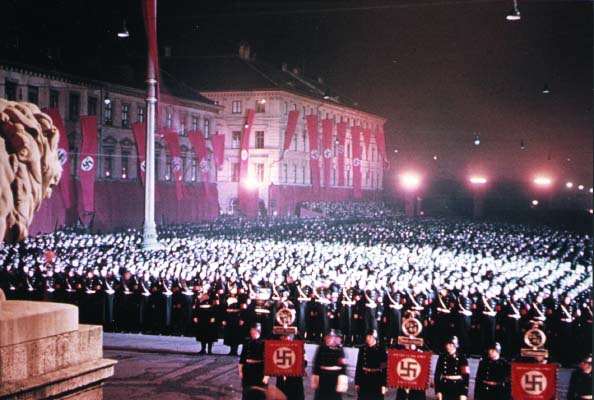Week 2: The Death of a Democracy
.jpg)
I. Why Did the German Republic Fail?
1) The Weimar Republic was born into a long-term social and economic crisis
2) The consequences of economic difficulty were felt throughout the political system
3) The political system was ill-equipped to deal with these stresses
Image right: Voters in Berlin-Dahlem line up to cast their ballots in the March 5, 1933, Reichstag election. Standing in the middle is Alfred Hugenberg (1865-1951), a far-right media mogul and who, as leader of the German National People's Party, formed a coalition with Hitler's NSDAP in 1933.
Graph: Hyper-Inflation
Excursus: The Burden of Reparations
Image: The banner of the "Rural People's Movement" (Landvolkbewegung)
Graph: Unemployment and Radical Votes (1928-1931)
Image: An Emergency Soup Kitchen in Berlin-Oberschönweide, 1931
Graph: Reichstag Delegations, 1919-1932
Graph: Proportional Composition of the Reichstag, 1919-1932
Map: Reichstag Elections by Electoral District, 1919-1933
Graph: Composition of the Last, Freely-Elected Reichstag, December 1932
II. Who Became a Nazi, and Why?
A. Some Substantive Explanations
1) The Great Depression?
2) Wounded Pride in Nation?
3) Antisemitism?
B. Social Variables: Three Hypotheses
1) Mass Psychology
2) Middle Class Panic
3) Political 'Confessionalism'
C. A Mass MovementMap: Germany's Territorial Losses, 1919
Map: Reichstag Elections by Electoral District (Wahlkreis), 1920-1933
Map: Election returns in Bavaria, July 1932
Map: Catholicism in Germany (1871-1918)
.jpg)
